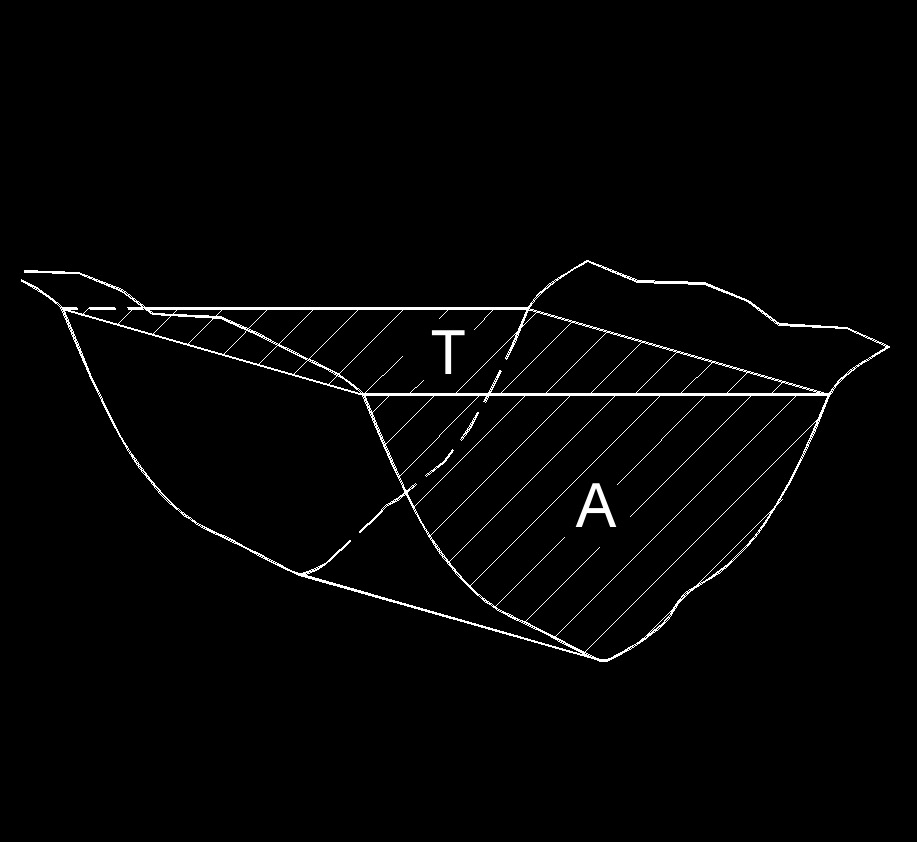Mean Depth
Mean depth formula |
||
|
\( h_m \;=\; \dfrac{ A_c }{ T }\) (Mean Depth) \( A_c \;=\; h_m \cdot T \) \( T \;=\; \dfrac{ A_c }{ h_m }\) |
||
| Symbol | English | Metric |
| \( h_m \) = Mean Depth | \( ft \) | \( m \) |
| \( A_c \) = Flow Area Cross-section of flow | \( ft^2 \) | \( m^2 \) |
| \( T \) = Top of Water Surface Width | \( ft \) | \( m \) Mean depth, abbreviated as \(h_m\), is the average depth of a fluid flow in an open channel or pipe. It is a hydraulic parameter used to characterize the flow conditions and calculate various flow properties. In an open channel, the mean depth is defined as the ratio of the cross-sectional area of flow to the top width of the channel. |
 Mean depth, abbreviated as \(h_m\), is the average depth of a fluid flow in an open channel or pipe. It is a hydraulic parameter used to characterize the flow conditions and calculate various flow properties. In an open channel, the mean depth is defined as the ratio of the cross-sectional area of flow to the top width of the channel.
Mean depth, abbreviated as \(h_m\), is the average depth of a fluid flow in an open channel or pipe. It is a hydraulic parameter used to characterize the flow conditions and calculate various flow properties. In an open channel, the mean depth is defined as the ratio of the cross-sectional area of flow to the top width of the channel.
The mean depth provides an important parameter in open channel hydraulics. It is used in various flow calculations, such as estimating the average velocity of flow, hydraulic radius, flow rate, or determining the water surface profile in a channel.
In pipes or closed conduits, the mean depth is the average depth of the flow within the pipe. It is often calculated as the ratio of the cross-sectional area of flow to the pipe's wetted perimeter. The mean depth in pipes is an important parameter in determining the flow velocity, pressure drop, or hydraulic resistance of the pipe. Overall, the mean depth is a crucial parameter for characterizing flow conditions and performing hydraulic calculations in open channels and pipes.

